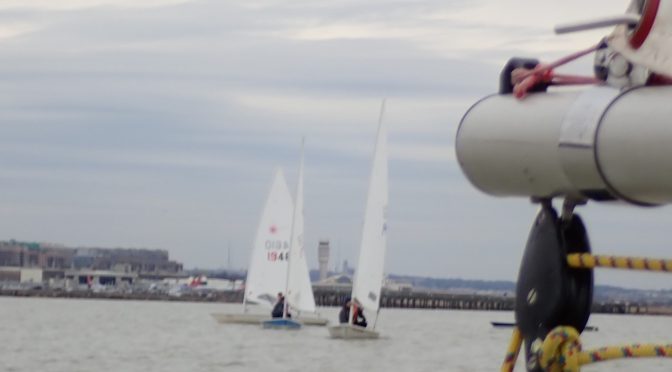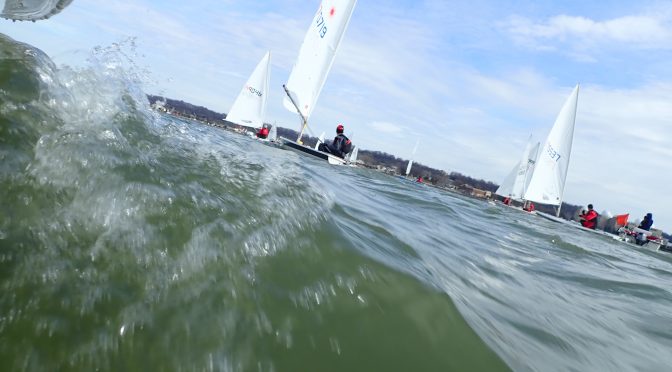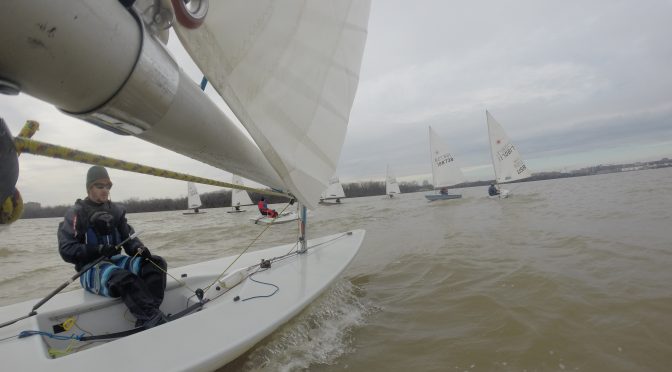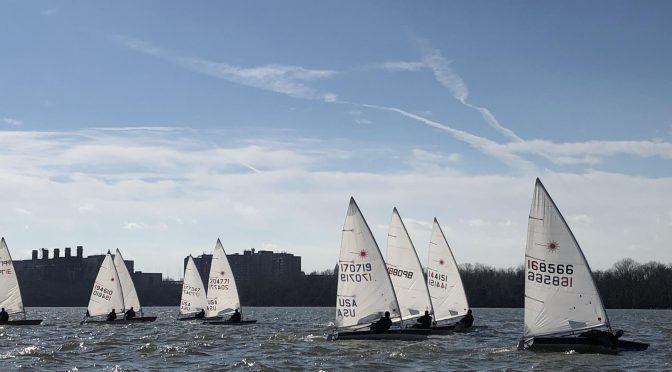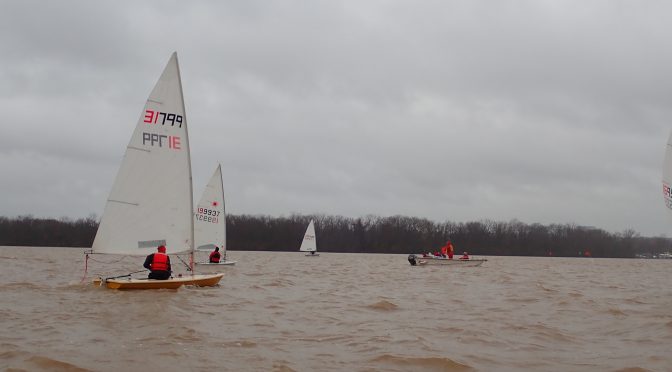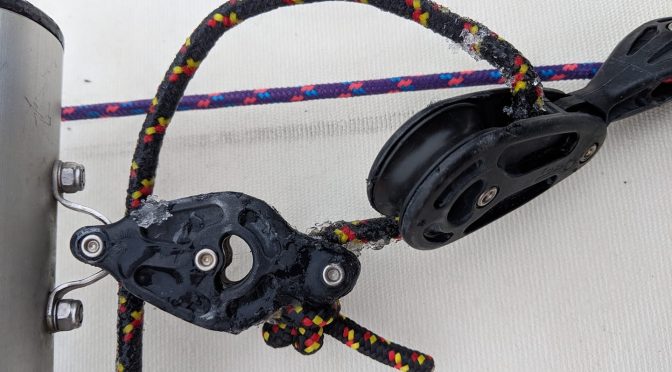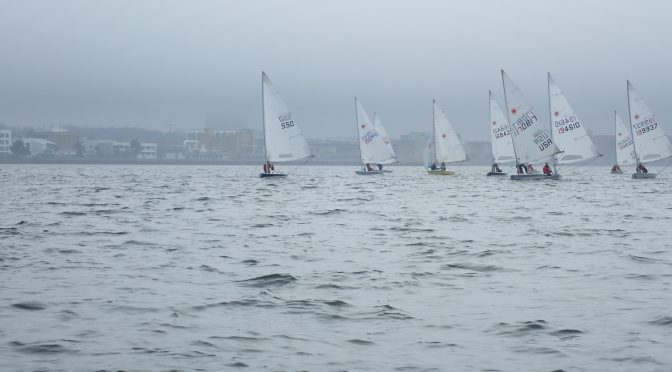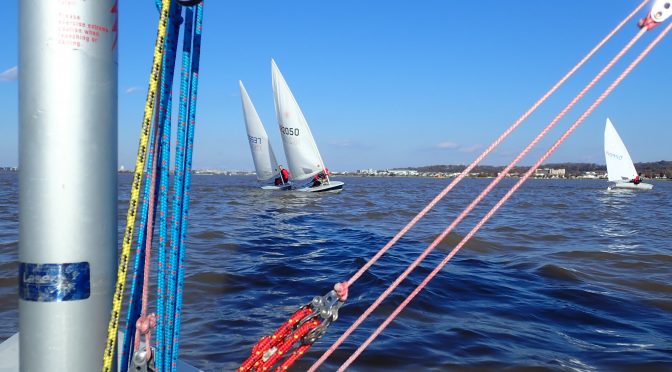Today was looking a little iffy when we woke up this morning. With a pending gale warning starting at 3, we were not too sure what the weather was going to have in store for us. Nabeel and Kevin were on race committee and were optimistic to get some races in before the gale came. We decided that we would go out and race until the wind shifted to the west which would be when the big breeze would come in.
We ended up getting 5 races in without the wind ever getting too crazy. With the sun out and the temperature getting close to 60 as well as breeze in the upper teens and low twenties I doubt anyone was cold today. We did triangles for the first 4 races and finished with windward leeward for the last race. There was lots of capsizing, I do not think anyone made it through the day without at least one. The breeze was mostly out of the south but there were some small shifts that had to be looked for, The first 2 races had the most breeze and then everything kind of moderated out to something in the mid teens.
With a south breeze, a flooded river, and changing high to low tide, the long upwind leg didnt take too long due to the current. The triangle courses didn’t allow much to happen tactically outside of sailing fast, keeping the boat moving, and not capsizing (or if you did capsize have a quick recovery). But the downwinds were pretty fun with some nice waves to surf. But the waves were fairly choppy and I found it best to move your weight forward and backward in the boat. This was both to keep the boat on the wave as well as not dive your bow into the wave in front of you.
All in all, it turned out to be a very nice day on the water and the high winds never really seemed to show up. Just goes to show that the forecasts are not always right and its always worth coming down to the marina to at least see what is going on.

